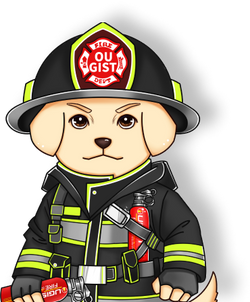Introduction:
Fire safety has always been a critical aspect of public safety and infrastructure protection. In the United States, the development of standards, classification, and rating systems for portable fire extinguishers has played a pivotal role in enhancing fire safety measures. This blog explores the journey of how these standards were established and their significance in safeguarding lives and property.

The Birth of a Necessity:
The need for a standardized approach to portable fire extinguishers became evident in the late 19th century as industrialization led to increased risks of fires in various settings. Businesses, homes, and public spaces faced growing fire hazards, necessitating a more organized and effective method of fire suppression. It was in this context that the National Fire Protection Association (NFPA) emerged as a key player in setting the stage for fire safety standards.

The Role of NFPA:
Established in 1896, the NFPA became a driving force in promoting fire safety standards and practices in the United States. As part of its mission, the NFPA undertook the task of developing a standardized classification and rating system for portable fire extinguishers. This effort aimed to provide clear guidelines for selecting the appropriate type of fire extinguisher for specific fire risks, ensuring that fire-fighting equipment was not only readily available but also effective.
Development of Standards:
In collaboration with experts from various fields, the NFPA developed and refined the standards for portable fire extinguishers over the years. These standards took into account factors such as fire extinguishing agents, extinguisher construction, labeling, and usage guidelines. The NFPA's efforts culminated in the publication of NFPA 10: Standard for Portable Fire Extinguishers, which outlines comprehensive guidelines for the selection, installation, inspection, maintenance, and testing of fire extinguishers.
Classification and Rating System:
One of the most significant contributions of the NFPA was the establishment of a classification and rating system that categorizes fire extinguishers based on the types of fires they can effectively suppress. This classification is denoted by a combination of letters and numbers, such as "ABC" or "BC," which indicate the classes of fires the extinguisher is suitable for. Additionally, fire extinguishers are rated based on their effectiveness in extinguishing fires of a specific size.
Ensuring Fire Safety:
The standards, classification, and rating system for portable fire extinguishers introduced by the NFPA have played a crucial role in enhancing fire safety across various sectors. Businesses, residential buildings, educational institutions, and public spaces now have a clear framework to follow when selecting and using fire extinguishers. This has not only minimized the risks associated with fires but has also facilitated the prompt and effective response of individuals during emergency situations.


